
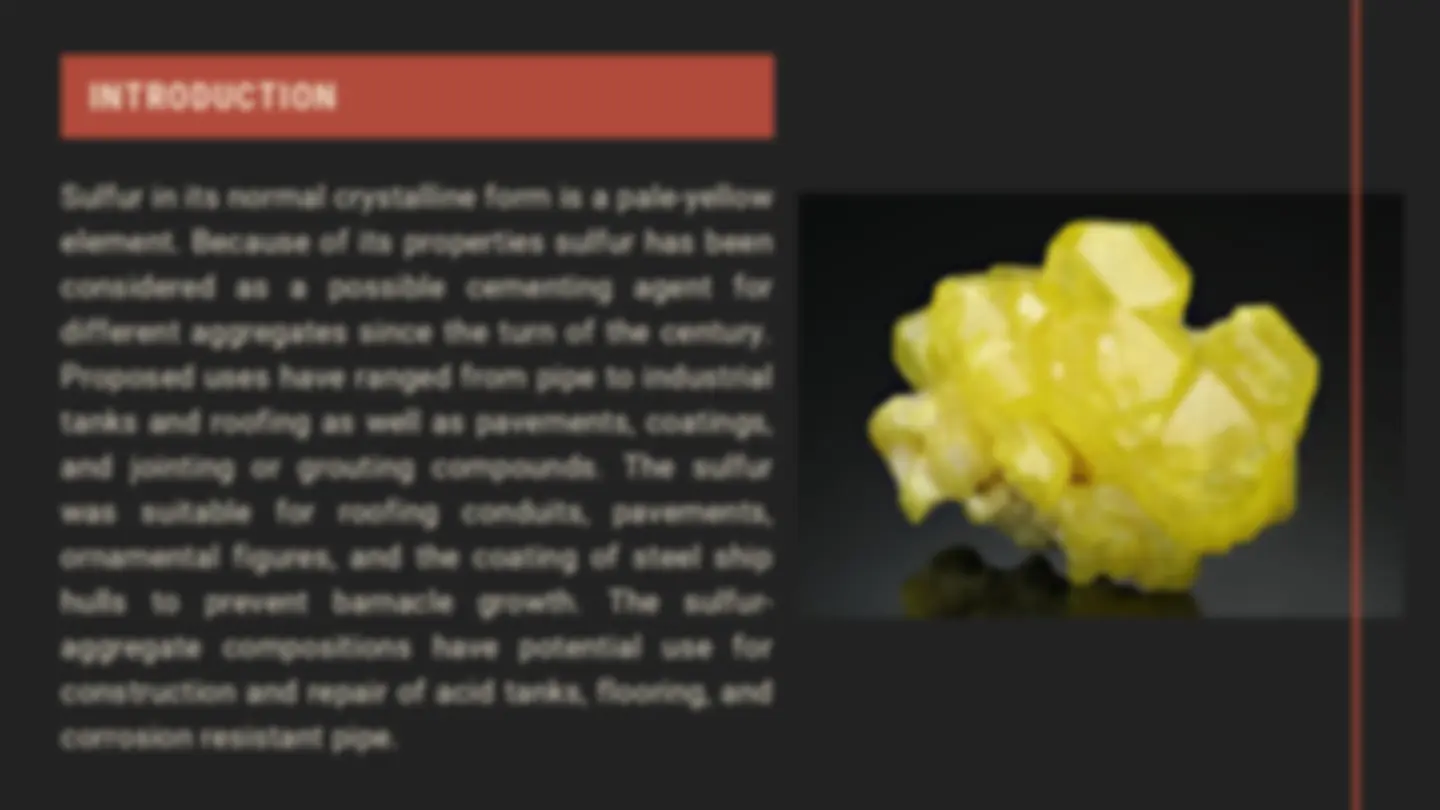
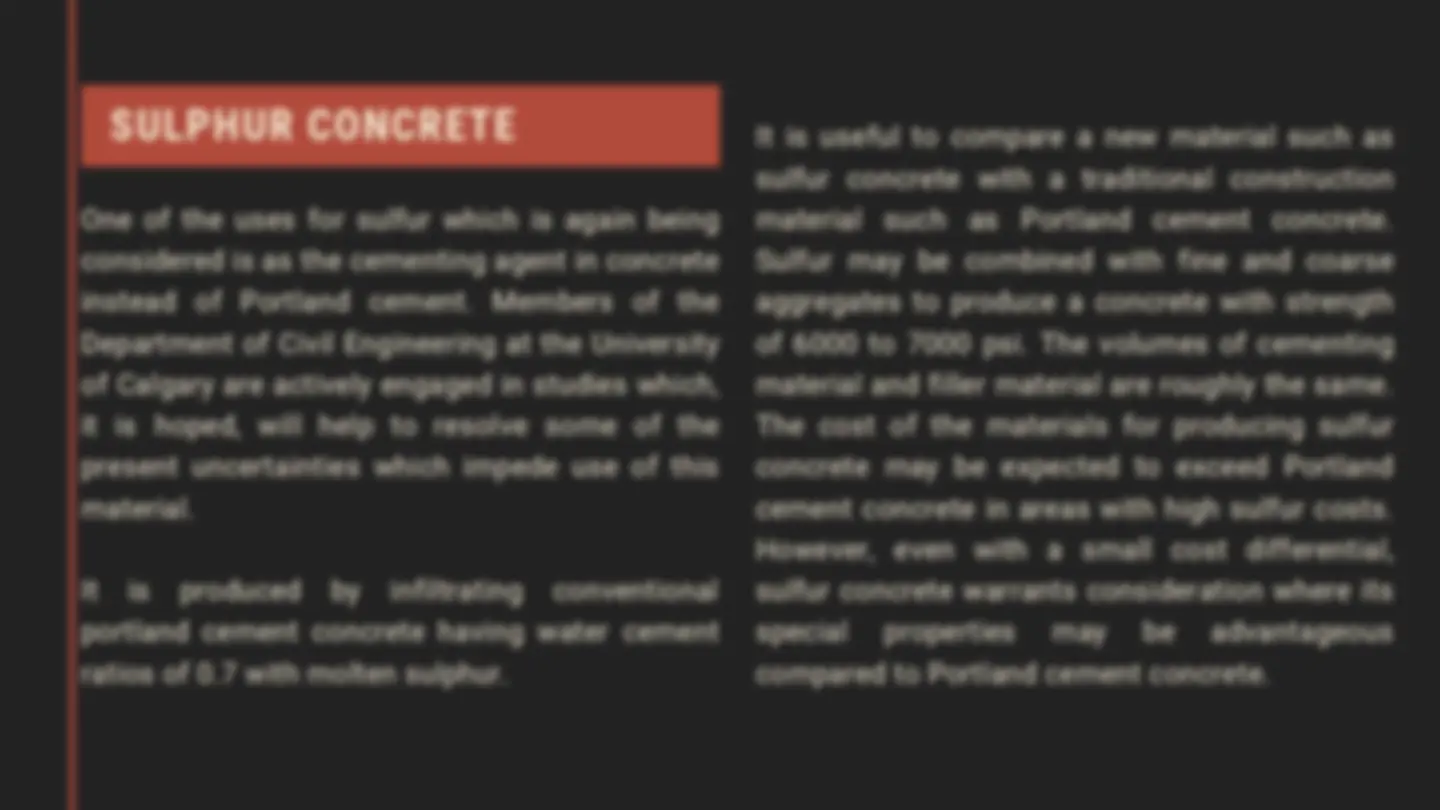
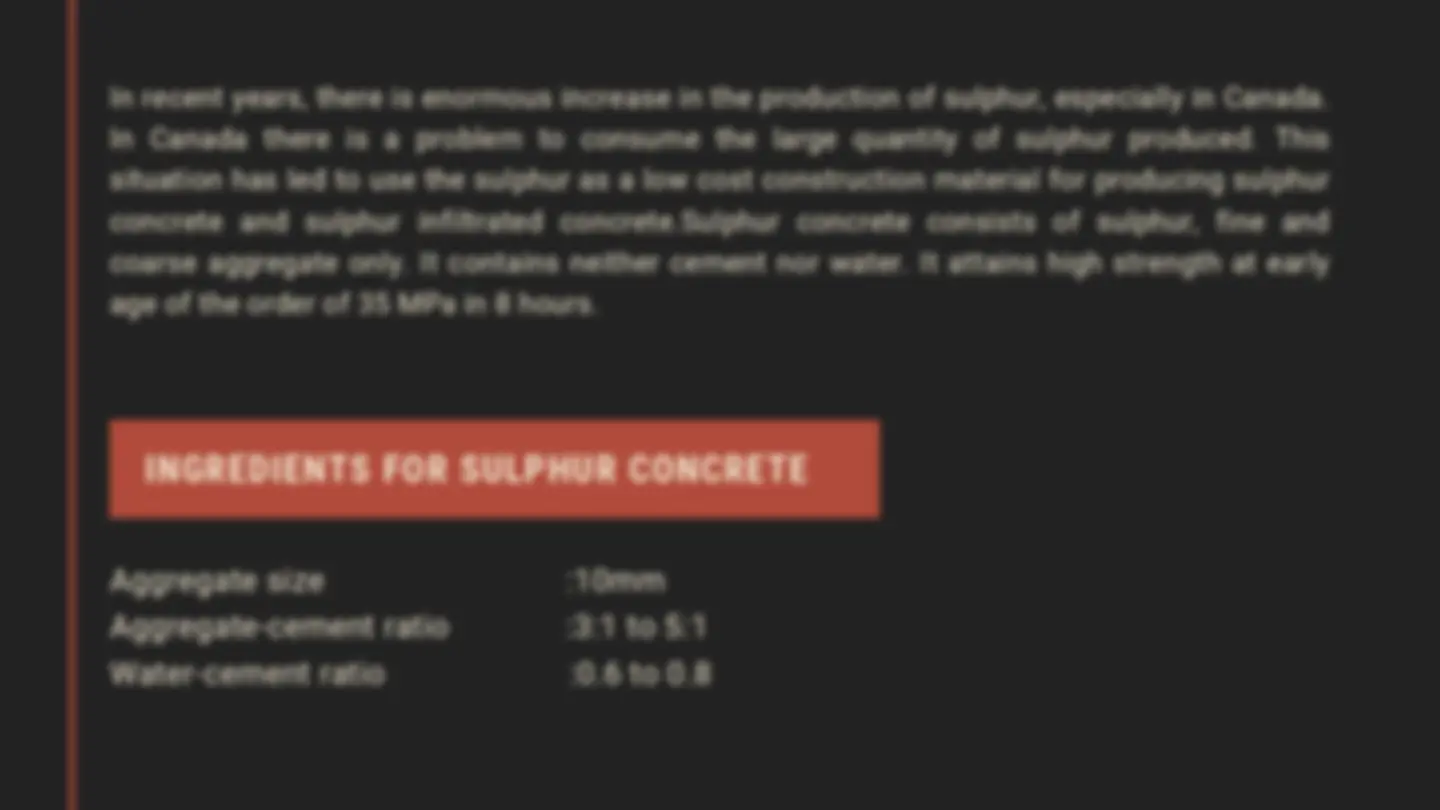
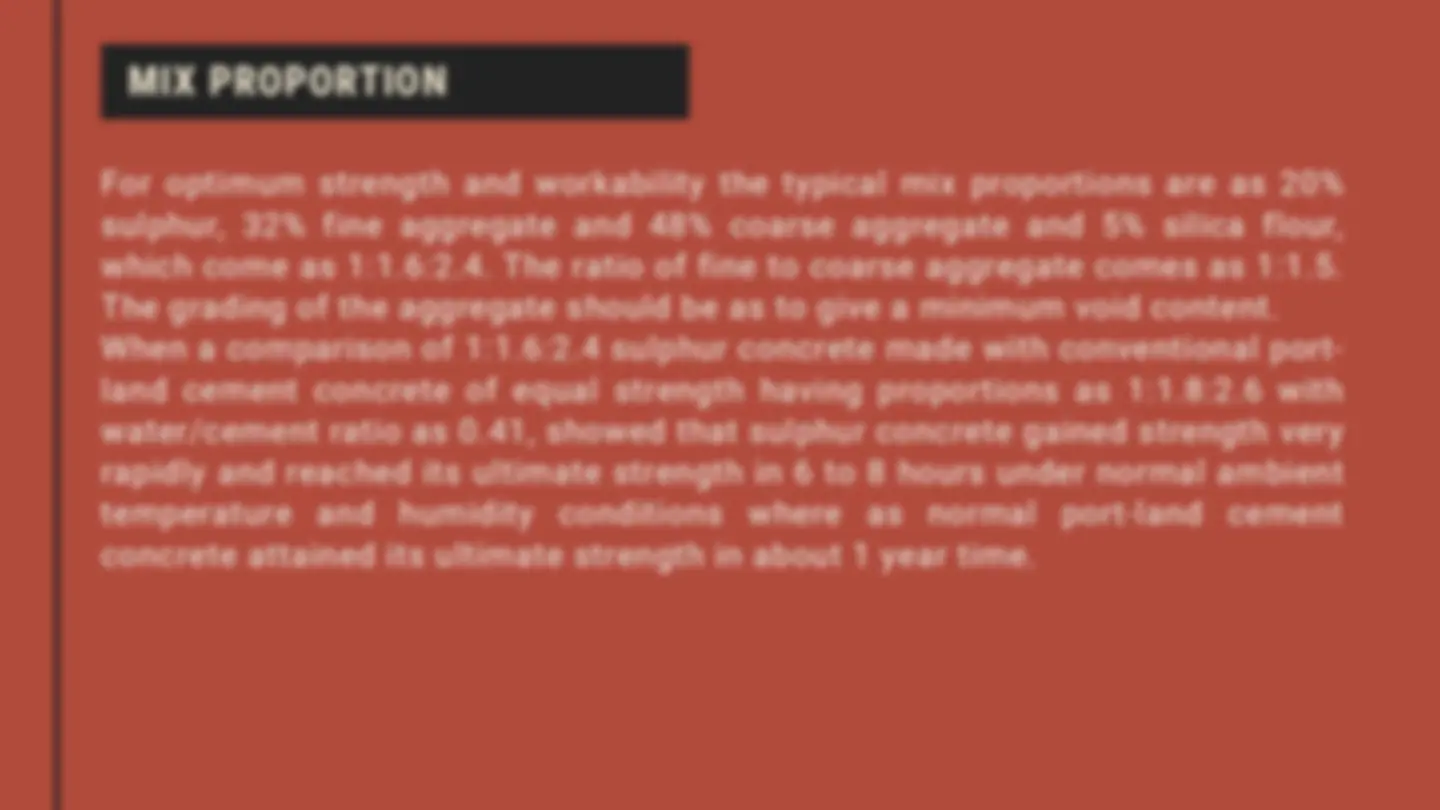
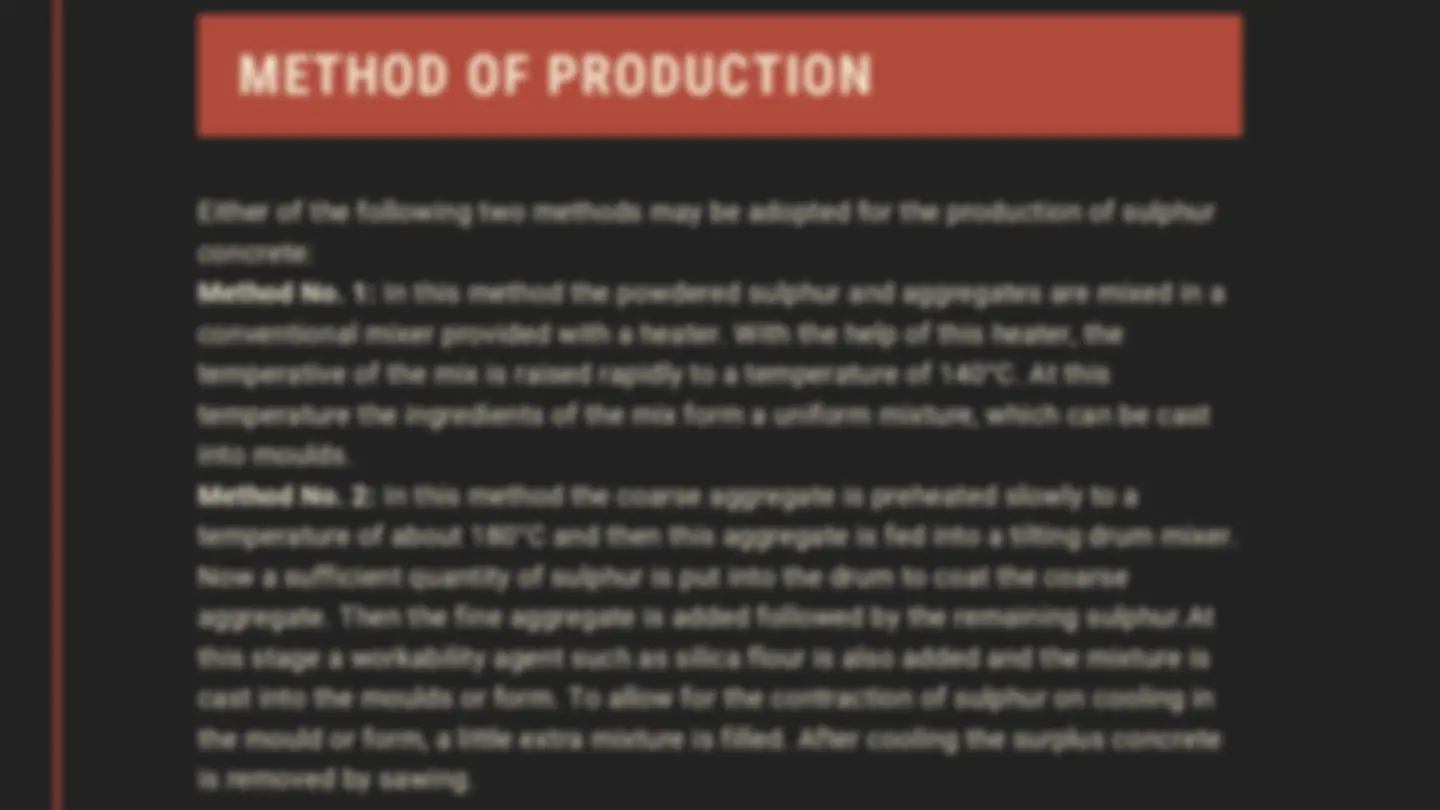
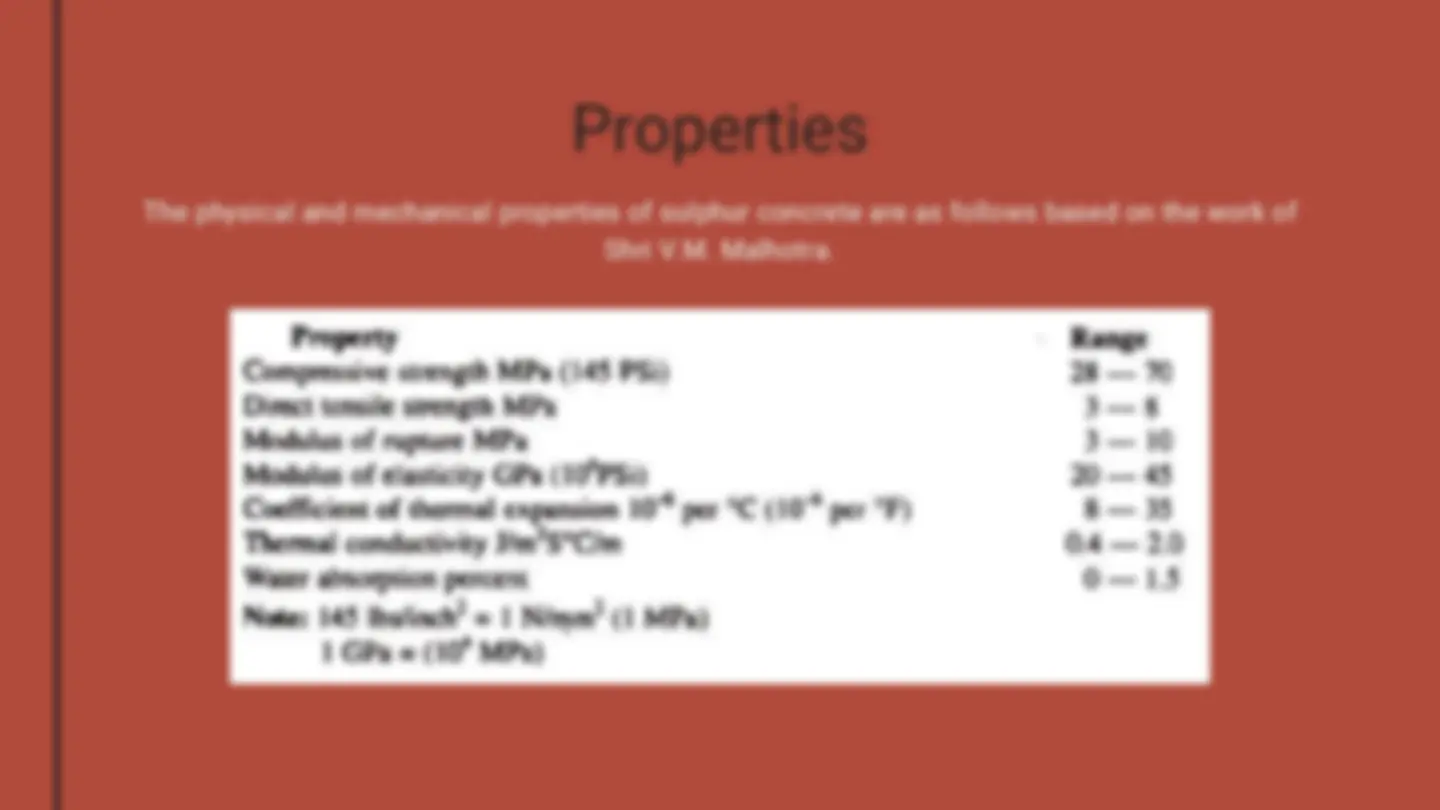
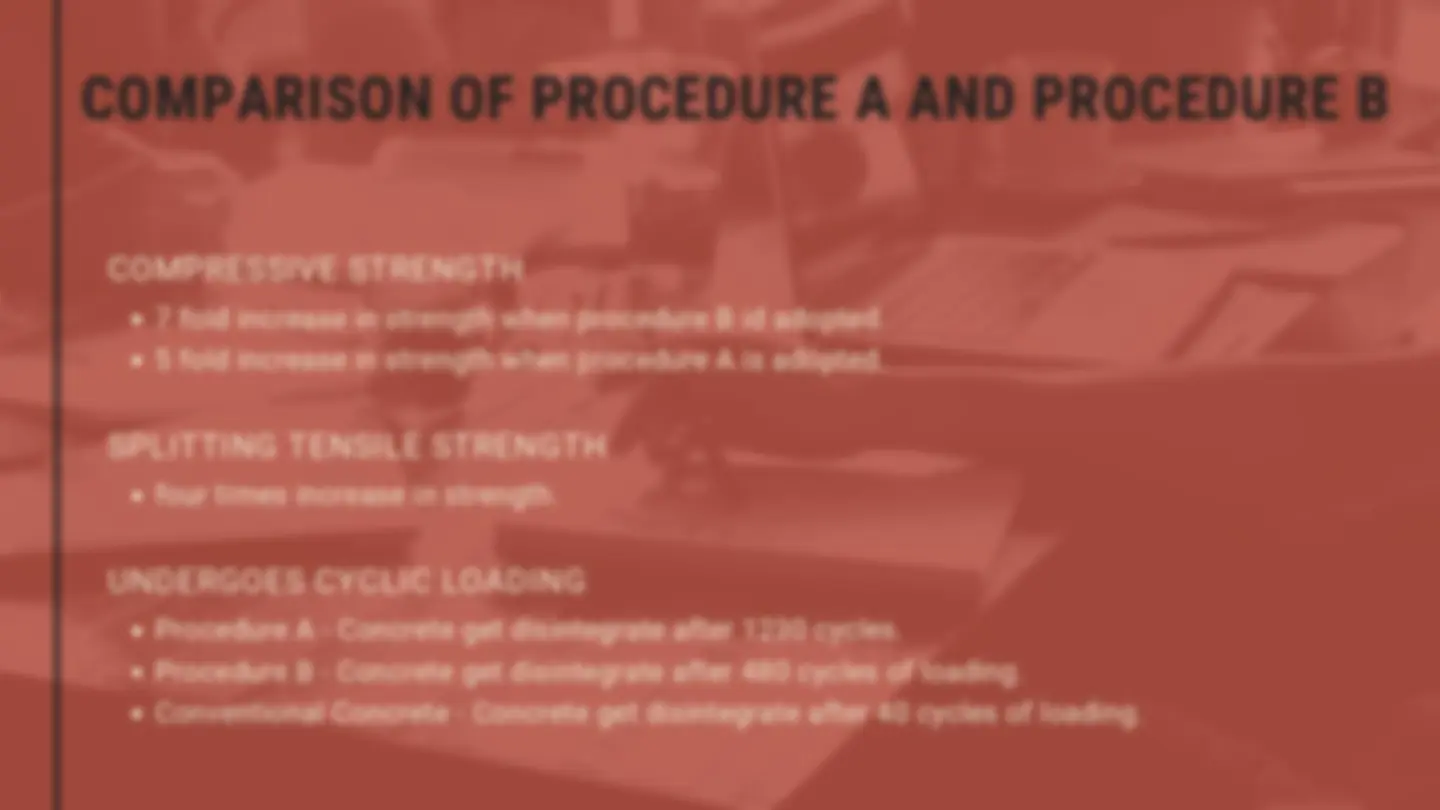
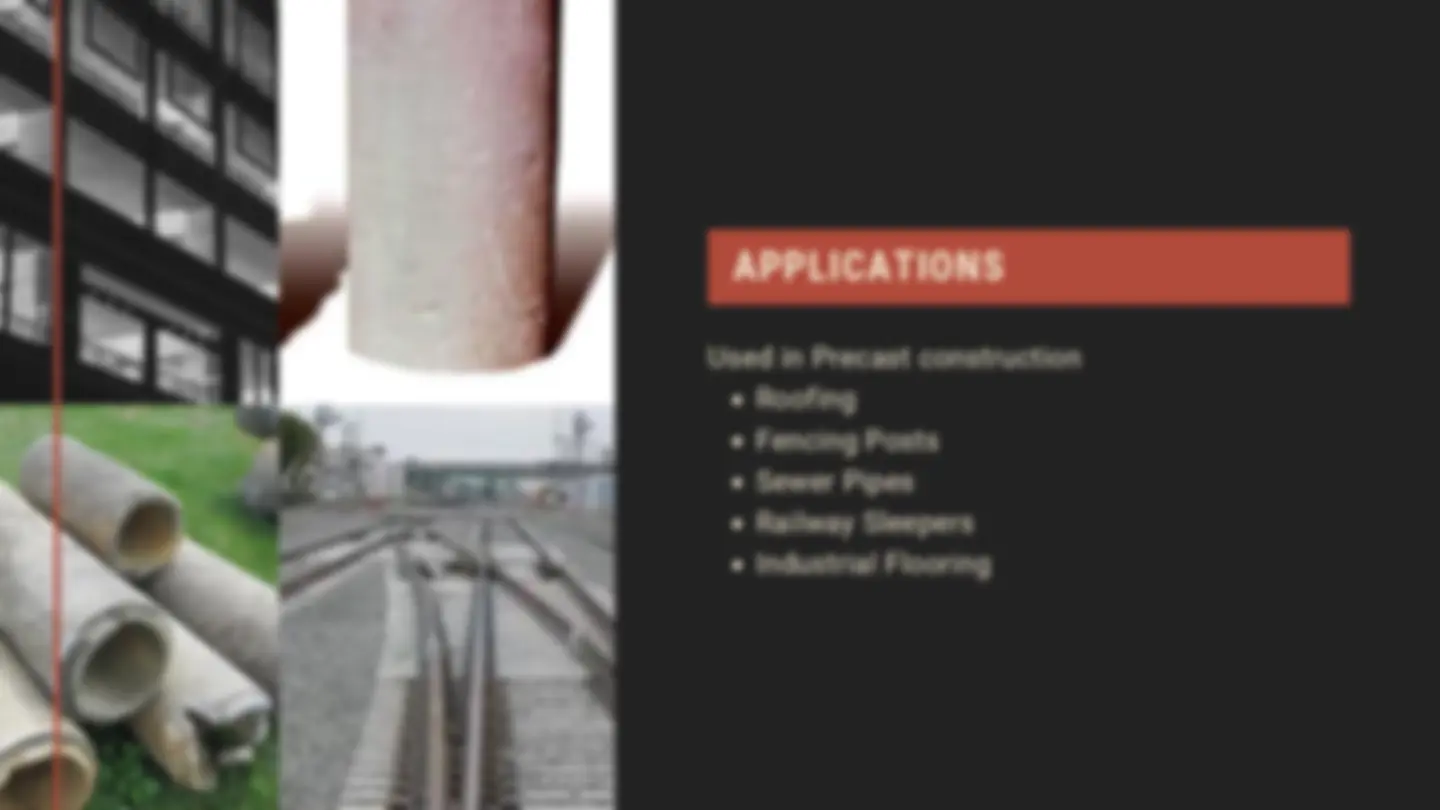
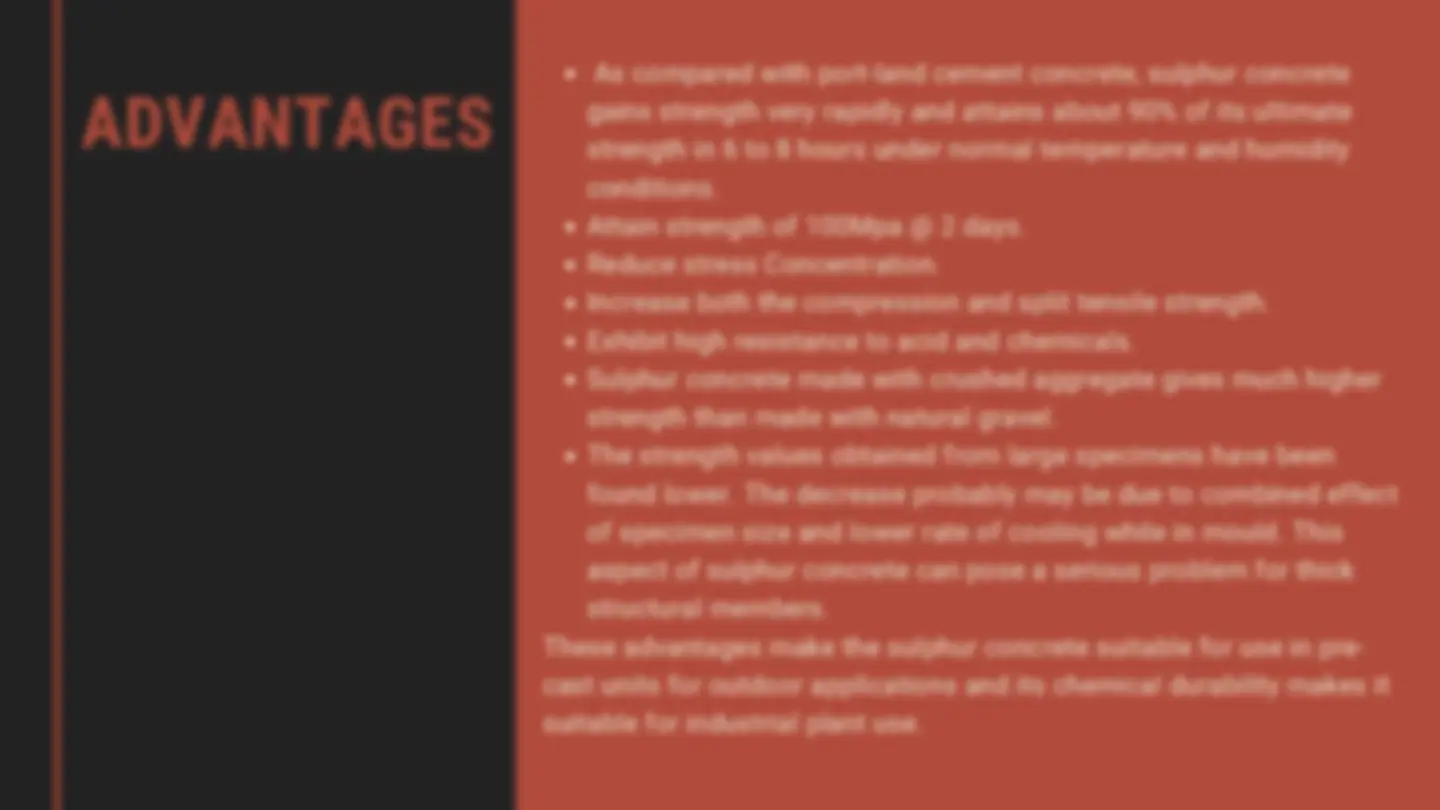


Study with the several resources on Docsity

Earn points by helping other students or get them with a premium plan


Prepare for your exams
Study with the several resources on Docsity

Earn points to download
Earn points by helping other students or get them with a premium plan
Community
Ask the community for help and clear up your study doubts
Discover the best universities in your country according to Docsity users
Free resources
Download our free guides on studying techniques, anxiety management strategies, and thesis advice from Docsity tutors
type of concrete example of sulphur reinforced concrete and sulphur infiltrated concrete breif discussion
Typology: Assignments
1 / 17

This page cannot be seen from the preview
Don't miss anything!










Krupa Narendra Savalia Kaneez Fatima Kazmi
Introduction Sulphur Concrete Ingredients for Sulphur Concrete Characteristics Setting Mix Proportion Method of Production Properties Procedure for making SIC Comparison of two procedures Applications Advantages Disadvantages References
SULPHUR CONCRETE
One of the uses for sulfur which is again being considered is as the cementing agent in concrete instead of Portland cement. Members of the Department of Civil Engineering at the University of Calgary are actively engaged in studies which, it is hoped, will help to resolve some of the present uncertainties which impede use of this material.
It is produced by infiltrating conventional portland cement concrete having water cement ratios of 0.7 with molten sulphur.
It is useful to compare a new material such as sulfur concrete with a traditional construction material such as Portland cement concrete. Sulfur may be combined with fine and coarse aggregates to produce a concrete with strength of 6000 to 7000 psi. The volumes of cementing material and filler material are roughly the same. The cost of the materials for producing sulfur concrete may be expected to exceed Portland cement concrete in areas with high sulfur costs. However, even with a small cost differential, sulfur concrete warrants consideration where its special properties may be advantageous compared to Portland cement concrete.
INGREDIENTS FOR SULPHUR CONCRETE
Aggregate size :10mm
Aggregate-cement ratio :3:1 to 5:
Water-cement ratio :0.6 to 0.
In recent years, there is enormous increase in the production of sulphur, especially in Canada. In Canada there is a problem to consume the large quantity of sulphur produced. This situation has led to use the sulphur as a low cost construction material for producing sulphur concrete and sulphur infiltrated concrete.Sulphur concrete consists of sulphur, fine and coarse aggregate only. It contains neither cement nor water. It attains high strength at early age of the order of 35 MPa in 8 hours.
SETTING
For optimum strength and workability the typical mix proportions are as 20% sulphur, 32% fine aggregate and 48% coarse aggregate and 5% silica flour, which come as 1:1.6:2.4. The ratio of fine to coarse aggregate comes as 1:1.5. The grading of the aggregate should be as to give a minimum void content. When a comparison of 1:1.6:2.4 sulphur concrete made with conventional port- land cement con crete of equal strength having proportions as 1:1.8:2.6 with water/cement ratio as 0.41, showed that sulphur concrete gained strength very rapidly and reached its ultimate strength in 6 to 8 hours under normal ambient temperature and humidity conditions where as normal port-land cement concrete attained its ultimate strength in about 1 year time.
The physical and mechanical properties of sulphur concrete are as follows based on the work of Shri V.M. Malhotra.
Properties
Procedure for making SIC
COMPARISON OF PROCEDURE A AND PROCEDURE B
7 fold increase in strength when procedure B id adopted. 5 fold increase in strength when procedure A is adopted.
COMPRESSIVE STRENGTH
four times increase in strength.
SPLITTING TENSILE STRENGTH
Procedure A - Concrete get disintegrate after 1230 cycles. Procedure B - Concrete get disintegrate after 480 cycles of loading. Conventional Concrete - Concrete get disintegrate after 40 cycles of loading.
UNDERGOES CYCLIC LOADING
Roofing Fencing Posts Sewer Pipes Railway Sleepers Industrial Flooring
Used in Precast construction
Not applicable to cast in place concrete. It has a low melting point of 119°C with a consequential loss of strength. It is vulnerable to combustion and produces toxic gases. It creeps more than port-land cement concrete. It has poor resistance to freezing and thawing. It produces corrosive effect on reinforcing steel under wet or humid conditions. It is very brittle. Expensive. These disadvantages make the sulphur concrete unsuitable for most structural applications.
DISADVANTAGES
REFERENCES (^) Feasibility and application of Sulphur in Concrete Structures. Structural Design of a Lunar Habitat. Strength and Durability of Sulfur Mortar. Journal of Materials in Civil Engineering. Concrete Technology. Google Engineering notes.